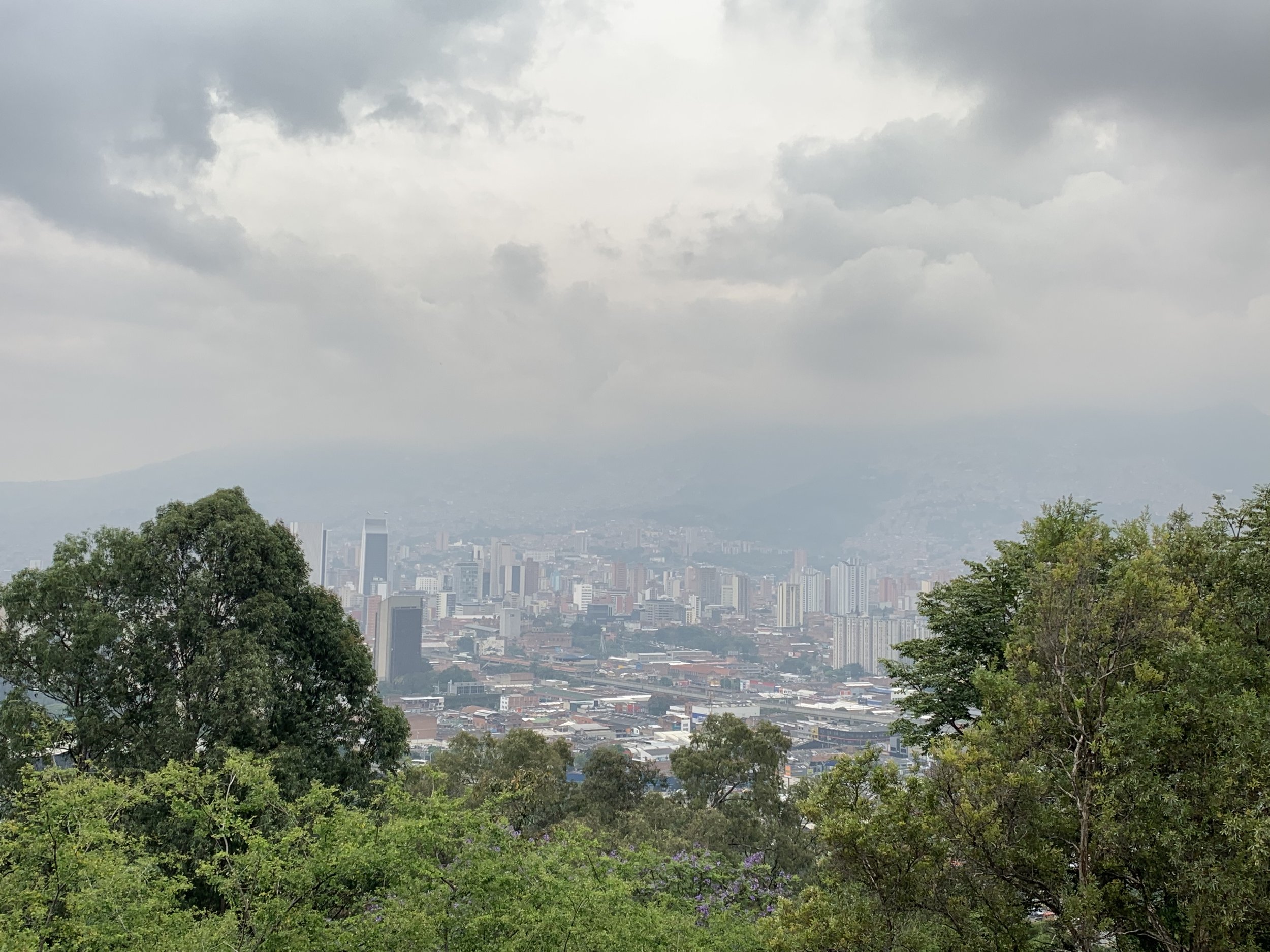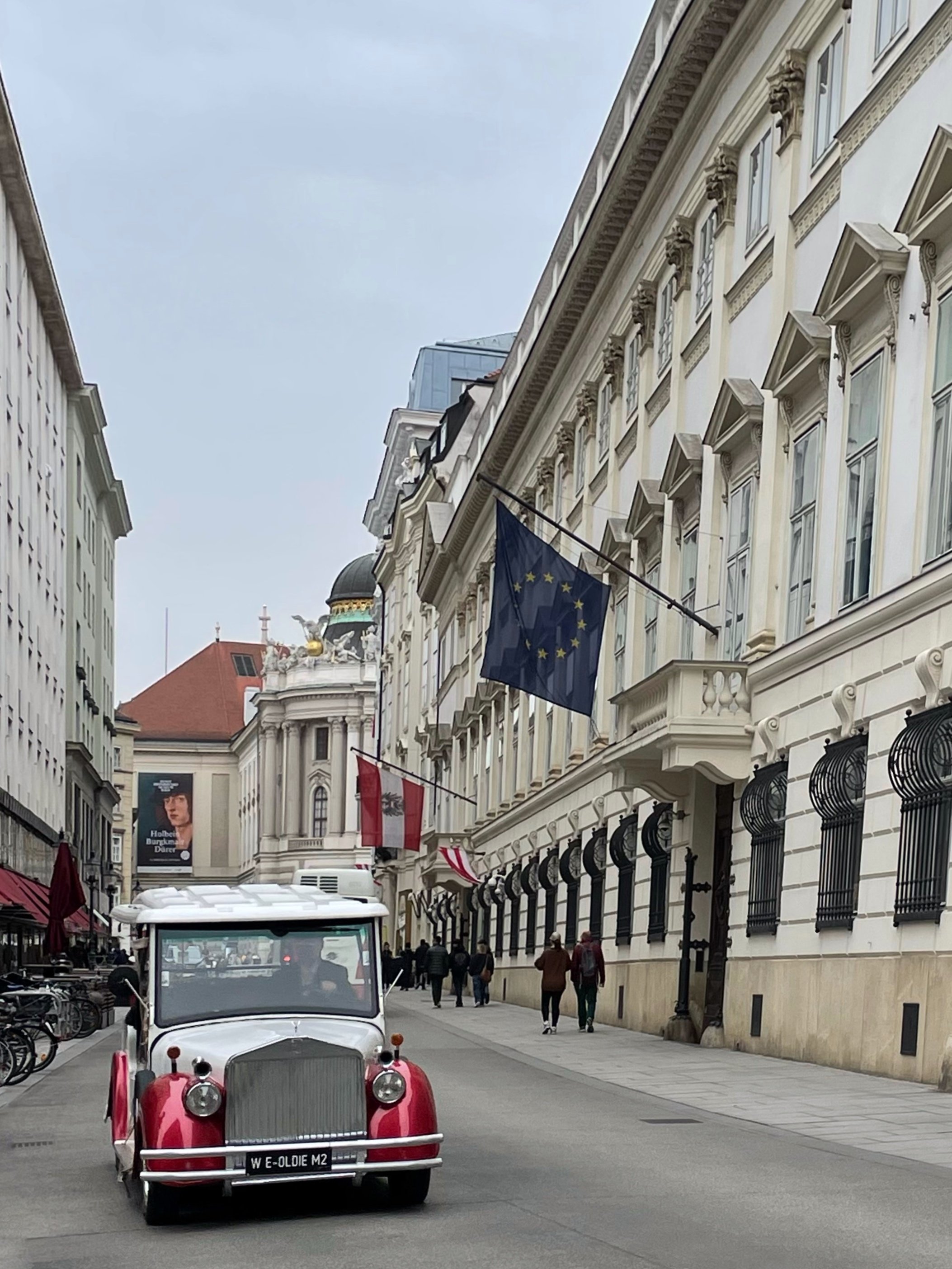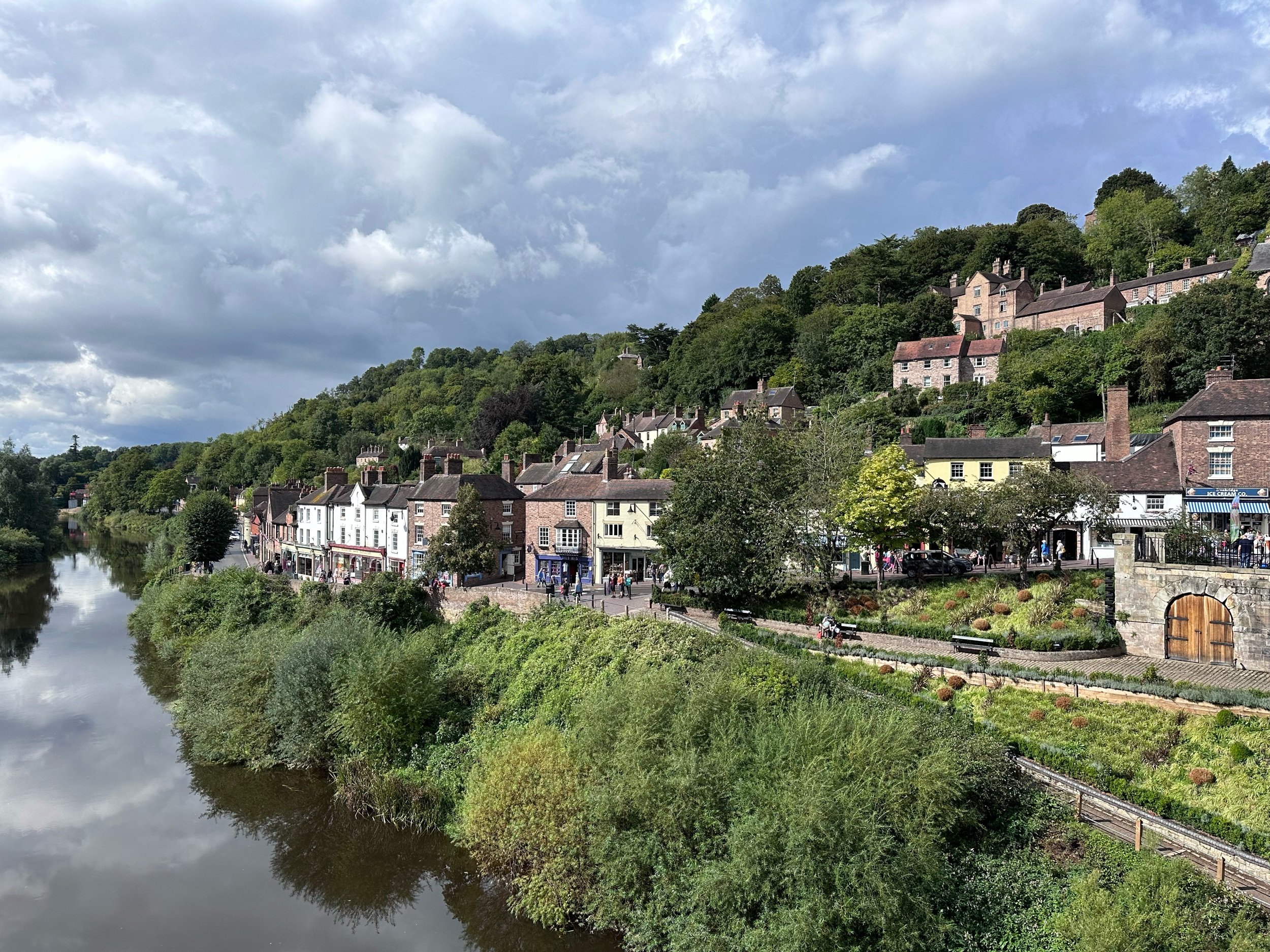Medellin and Antioquia, Colombia
Medellin and Antioquia highlights
Calle 10
Mirrador cerro de nutibara
City centre and Plaza Botero
Communa 13
El Peñol
Guatape
Santa Fe de Antioquia
Why visit Medellin and Antioquia?
For a surprising city that exceeds expectations - with a fascinating history, a great selection of day trips, and absolutely stunning mountain scenery,
Getting there and around
In February 2022 when our kids were 6 and 9 years old we travelled to Colombia.
After visiting Bogota we flew to Medellin with Avianca, a one hour flight. Our hotel was a 45 minute drive from José María Córdova International Airport via the mountain tunnel.
We had an excellent local guide, Juan Carlos, from Neptuno Colombia Travel who made us feel safe and had fantastic first-hand knowledge of the city and rural areas.
Accommodation
We stayed at the Hotel Diez on Calle 10 which was in a great location and had a free jacuzzi and sauna which were lovely after long days sightseeing.
The views from our hotel room were pretty mind blowing, as captured by Mal in this awesome photo!
Seeing the clouds that descended over the Andes mountains each evening lift at dawn to reveal hidden buildings was quite a sight.
Our family suite had a king size bed, a single bed, and an adjoining space with another single bed, plus a hammock, and this view! The hotel is well-priced for the location and facilities.
Our star rating: 5
Our cost rating: 5
Getting around
We had a private driver arranged through our local tour agent who took us around the city and out for excursions. We used the city’s excellent cable car system to get to Communa 13.
Calle 10
The area around the hotel was very trendy and we felt safe walking around during the daytime and evening. We ate dinner in a few nearby restaurants which, while not traditional Colombian food, were great for the kids, including Crepes and Waffles, Chef Burger, and Il Castello. All highly recommended.
Chef Burger claim to have the best burger in town and we agreed! They actually get a special bonus mention because their kids meal was perfect (mini chicken burger with French fries, broccoli and a small pot of maple syrup to dip everything in). Many restaurants we ate in didn’t have a kids menu and even when we asked for mini versions the portions were huge! But Chef Burger got it spot on.
Anyway, enough about food and onto the sights…
Mirrador Cerro de Nutibara
We went up to this hill to get a great viewpoint of the city and a better understanding of its geography. Colombia is the second most populated country in South America (second to Brazil) and there are 3 million people in Medellin. The city sprawls out over the Andes mountains and looks huge!
City centre
We walked through the Plaza Botero which has 23 of Botero’s sculptures. It was an impressive collection and we enjoyed seeing the larger in-situ versions of the works we’d seen at the Museo Botero in Bogota.
We also spent some time in the Parque San Antonio. In 1995 FARC detonated a bomb at a concert in the park which killed 23 people and injured dozens more. The bomb had been placed inside Botero’s ‘Pajaro de Paz (Bird of Peace)’ statue.
The destroyed sculpture and an identical replacement sit side-by-side as a reminder of the atrocity and as a memorial to the victims.
Medellin’s violent past is raw and recent for many Colombians and whilst they are keen to move on, they also want to own and remember their history. Please think carefully about the impact on local people who have been directly impacted by drug trafficking and the associated violence before doing any kind of ‘Escobar tour’ or coming to Colombia only for the drug or sex trade.
Medellin city centre was crowded, noisy and chaotic. It was interesting to visit but we didn’t want to hang around for long because it was such an onslaught on the senses.
Communa 13
Medellin was once the most dangerous city in the world due to drug gang violence. Controlled by traffickers, 10 years ago we couldn’t have visited this area without feeling unsafe.
The innovations in urban planning and infrastructure, and public realm improvements attract tourists who bring much needed money into the neighbourhoods.
When we visited, the area was buzzing with tourists. We saw lots of children going to school (each child has free access to half days at school).
We took the cable car beyond Communa 13 to some of the more recently settled hillside areas and it was clear that the Government still has a big challenge.
There has been a recent influx of Venezuelan refugees and Colombia is welcoming them and providing sanctuary and benefits. Employers, particularly in rural areas, are grateful for the additional migrant labour.
This has resulted in rapid urban sprawl, with migrants building their own homes on the mountainsides out of cheap tin and wood. These areas benefit from good electricity and water supply and the subsidised cable car, but overall life must still be a big challenge for people living in these areas.
El Peñol
On our way to El Peñol we stopped at a farm up in the mountains and bought carrots to feed the animals. This was a simple activity that broke up the drive and was great for children.
El Peñol is a new town, built as the original town was flooded in the 1970s to create reservoirs that are used to generate hydropower. The area now produces 30% of Colombia’s electricity.
Before the old town was submerged, the power company promised the townspeople that they would retain two towers from one of the landmark buildings in the town. The president of the power company broke his promise, demolished the towers, and ended up being punched by a local priest who was furious at the betrayal!
As compensation, the power company built an almost life sized model replica of the old town. The residents painstakingly restored original floor tiles, bricks and architectural details from the old buildings to use in the model.
The power company also built the actual life sized new town of El Peñol. We enjoyed walking around the pleasant new town, especially the pretty town square and vibrant local market where we bought fresh fruit. Our guide told us he remembered the new town being built and visiting as a child when it was brand new and squeaky clean. The new town wasn’t touristy and it was good to get a feel for an authentic Colombian town.
Throughout the town we saw ‘escalera’ (ladder trucks) converted into buses to carry passengers, animals and freight around the countryside.
They are vital transport for many people in the rural areas, in the absence of alternative modes e.g. public bus transport.
Each escalera had their own intricately hand painted designs and name.
El Peñol is perhaps best known for La Piedra (the rock).
It is 200 metres high and the second highest monolith in South America.
To reach the top entails a 750 step (arduous) climb.
The kids ran up a lot of the steps, they are so fit and healthy!
It is 7000 feet above sea level at the top and we definitely felt the altitude.
The views from the top out over the lake were stunning and well worth the exertion.
The lake looks like lots of different lakes but it’s actually one big connected reservoir.
Spotting tiny boats and cars below made us feel very high up indeed!
Once we had climbed back down from the rock we took a boat trip on the lake. The kids loved it when we went really fast! We spotted holiday homes around the lakeside, which belonged to famous Colombian’s including the Arsenal goalkeeper Ospina and the singer Maluma who is well loved in Colombia and features in Encanto.
We also saw the villa that used to belong to Escobar but was blown up and now lies in ruins. Hopefully it’ll be demolished soon.
Guatape
Near to El Peñol is the town of Guatape.
Colombia as a country is so colourful and Guatape really takes it to a new level!
The townspeople of Guatape also lay claim to the rock and tried painting the town’s name on it but were stopped before they could finish the letters. So now there is a rather ugly G and half a U that looks like an I on the rock. Tag graffiti at its worst! Our guide said the letters have faded over time and reckons it will eventually erode away.
Setting aside the spray paint, the townspeople of Guatape have a lot to be proud of because Guatape is an incredibly pretty and charming town at the edge of the lake, with brightly painted buildings and colourful umbrellas hanging above the streets.
Each house in Guatape features hand painted zocolas which protect the base of each building from damp and erosion.
The zocolas take on different designs and we had fun spotting our favourites. Common themes are flowers - the area is famous for growing them, animals, and sileterros (or chair carriers) - the indigenous people in the area were made to carry the Spanish on chairs.
Now they carry flowers instead.
Santa Fe de Antioquia
We took a day trip to Santa Fe de Antioquia. During the journey we saw spectacular mountain scenery, palm trees, vultures flying high overhead, and coffee and tomato plants growing at the roadside.
In the Santa Fe area we saw drier forest areas with huge cacti and down by the river, people panning for gold.
Unfortunately the cable car and the Museo Juan Del Corral museum were closed the day we visited. We walked around the town and looked at the beautiful architecture and learned about some of the town’s history which is a sorry but sadly familiar story of European greed for gold and power; and imperialism, slavery, and colonial rule.
Final thoughts
We wanted to visit Colombia because it has a fascinating history and stunning environments. But as our trip got closer we did start to wonder if going to Medellin was a sensible idea. We read horror stories of street robberies and kidnaps during the 1990s and 2000s and we were warned by family members that it would be dangerous.
Medellin city centre definitely felt like a big urban environment and we were aware of homeless people and beggars; but we never felt worried or in danger, even when walking near our hotel at night. We are used to cities (and their common social problems) which probably helped.
This is one of our longest blog posts because we experienced so much here and because we are all agreed that the Antioquia region was our favourite out of the places in Colombia that we visited (though we loved Bogota too). The setting of Medellin and the surrounding Andes countryside is breathtakingly beautiful.
The people we met were all friendly and kind, and very patient given our rudimentary Spanish. They were also keen to show us that their region has so much more to offer than ‘Narcos’ and ‘Escobar tours’. Think Encanto instead - do visit and enjoy this magical place.
We are already dreaming of a return journey to Colombia, to spend more time in the mountains with the sileterros communities, to visit the coffee growing region, and perhaps even the rainforest!
Wild Rumpus Travel copyright © 2019 - 2024 all rights reserved.
































